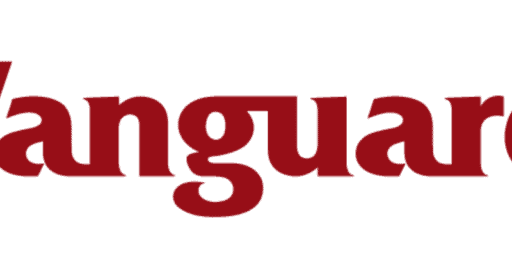Wealthsimple vs. RBC InvestEase – 2025 Comparison
Researching the best Canadian robo-advisors can be time-consuming, if not downright overwhelming! Canada has a lot of great options, and it can be a challenge to figure out how they differ from one another.
Which one has the selection and services you’re looking for?
Which will work best for your specific situation?
Which has the lowest fees and/or the best value? (they’re not always the same!)
Before you get bogged down in questions and notes (and overwhelm), take a deep breath. The MDJ team is here to help you make an informed decision that works for you.
In this Wealthsimple Invest vs RBC InvestEase comparison, we’ll put these two robo-advisors head-to-head. We’ll give you all the details and then break down the similarities and differences – and show you who comes out on top.
Wealthsimple vs. RBC InvestEase: Quick Comparison
Just because they come from wildly different companies, doesn’t mean these robo-advisors don’t have anything in common!
The chart below is a great way to get a big-picture idea of what RBC and Wealthsimple have to offer. We’ve taken all the information from our Wealthsimple Review and our RBC InvestEase Review and put it side-by-side for easy reference.
RBC | Wealthsimple | |
Investment Options | 14 ETFs (7 standard, 7 SRI), iShares Blackrock only | 50+ ETFs, from a variety of top providers |
Fees (Management Fees & MERs) | 0.61-0.8% for all accounts |
|
SRI Options | ||
Minimum Investment | $100 | $0 |
Portfolio Options | A choice of 5 portfolios | A choice of 9 portfolios (3 standard, 3 SRI, 3 Halal) |
Account Types | TFSA, RRSP, unregistered. | RRSP, Spousal RRSP, TFSA, LIRA, RRIF, LIF, RESP, unregistered |
Returns | No meaningful data | 4-12% annualized growth |
Customer Service | Easy to access, fiduciary responsibility | Easy to access, fiduciary responsibility |
Bonus Perks/Features |
| |
Additional Services |
|
|
Mobile App | ||
Promo Offer | $50 sign-up bonus | |
Sign Up |
You can find a full analysis of each robo-advisor in their individual reviews, but context is always helpful when you’re making a comparison. Let’s break down the major similarities and differences.
Wealthsimple or RBC: Fintech vs. Bank
Wealthsimple is a fintech company that was launched in 2014, but just because they’re new, that doesn’t make them insignificant. Wealthsimple has about 2 million account holders and over $15 billion in assets under management. Wealthsimple Invest is our most recommended robo-advisor.
RBC is the largest bank in Canada with 17 million clients and over 150 years of history. Their robo-advisor, RBC InvestEase, launched in late 2018. RBC is one of only two big banks to offer robo-advising (the other is BMO, which rolled out their SmartFolio robo-advisor in early 2016).
These two companies are incredibly different, but they overlap in one area: they’re dedicated to providing investors with a user-friendly passive investing option.
Wealthsimple vs. RBC: Security
Both Wealthsimple and RBC are legit, safe, and trustworthy. Your account is held by a custodial broker that is a member of the Canadian Investor Protection Fund (CIPF) and regulated by the Investment Industry Regulatory Organization (IIROC).
This means two things for you:
1. The way both companies invest your money is regulated by an independent agency
2. If either robo-advisor goes bankrupt (extremely unlikely with billions of dollars under management by each one), your accounts are protected up to $1 million.
Both companies also protect your data with bank-level encryption and security. RBC even offers account holders a 100% reimbursement if a data breach results in an unauthorized transaction.
Wealthsimple vs. RBC: Fees
Wealthsimple and RBC have similar fee structures, charging account holders a percentage of their account total annually. RBC charges 0.5% on all accounts, while Wealthsimple takes a tiered approach and charges 0.5% on accounts up to $100,000, but 0.4% on all larger accounts.
The MER on Wealthsimple’s ETFs varies, ranging from 0.12%-0.15% annually. The MER for their Socially Responsible Investments is higher, ranging from 0.21%-0.23%.
RBC InvestEase’s ETFs have an average MER of 0.12% and their SRI options range from 0.18-0.23%, which is slightly lower than Wealthsimple’s.
Obviously, we appreciate Wealthsimple’s discount for larger accounts, which can add up to a lot as your total holdings increase. We can’t deny that RBC does offer fractionally lower total fees for their SRIs, but if you have an account over $100,000 and qualify for Wealthsimple’s lower annual fee, the cost difference disappears almost entirely.
Wealthsimple vs. RBC: ETF Selection
Wealthsimple uses +50 standard ETFs to build their portfolios, plus 5 SRI ETFs and 1 Halal-specific ETF for their SRI and Halal portfolios. They use ETFs from the top providers in Canada.
RBC works with a selection of 7 standard and 7 SRI ETFs. They have an exclusive partnership with iShares, so they offer RBC iShares ETFs only.
iShares is one of the best ETF providers in Canada, so this isn’t a deal-breaker, it just means that RBC investors could miss out on offerings from companies like Vanguard and BMO.
Wealthsimple vs. RBC: Socially Responsible Investments
Both Wealthsimple and RBC InvestEase take responsible investing seriously.
Wealthsimple Invest’s SRI ETFs:
Contain no investments in the oil, tobacco, or weapons industries.
Stick to more sustainable industries like clean energy, electric cars, and plant-based meats.
Avoid the top 25% of carbon producers in each industry for their SRIs
Make sure that every company in their fund has at least 25% (or a minimum of 3) women on their board of directors. The fact that this is still notable in 2025 is a whole other issue, but we appreciate the gesture.
RBC has branded their SRIs “Responsible Investing” because it goes beyond the social aspect and covers environmental, social, and governance factors. For example, they:
Avoid companies in the tobacco, “controversial weapons,” and civilian firearms industries
Avoid any company involved in “severe controversies” (harassment claims, emissions test data falsification, etc).
Assess all investment candidates based on environmental, social, and governance standards.
They have a lot of math to back this up, which you can find on their website, but basically what it means for you is a collection of ETFs you can feel good about investing in.
The bottom line here is that both Wealthsimple Invest and RBC InvestEase are dedicated to finding unproblematic investment options, not only environmentally but also socially and legally. RBC has a slight leg up on Wealthsimple in this area because they offer a wider selection of ETFs with lower average MERs, so if SRIs are your main focus, you may want to keep this in mind.
Wealthsimple vs. RBC: Portfolio Options
Both companies offer a variety of portfolio options. Wealthsimple offers standard, SRI, and Halal portfolios with a risk-tolerance value from 1-10. This value is based on information you provide and is used to determine the exact allocation of your portfolio, so there’s a good amount of customization.
RBC offers 5 portfolios ranging from Very Conservative to Aggressive Growth, using either standard ETFs or responsible investing ETFs. It’s a solid range of portfolios, diverse enough to provide options for any goal or level of risk tolerance.
Both Wealthsimple and RBC InvestEase rebalance your portfolio if it strays too far from your ideal asset allocation. They also reinvest any dividends earned to grow your account even faster.
Wealthsimple vs. RBC: TFSAs, RRSPs, and more
We’re always interested to see what accounts a robo-advisor offers, and it can make a difference in how we rank them. We value a good selection!
Wealthsimple Invest offers a wide range of accounts including:
- RRSP
- Spousal RRSP
- TFSA
- LIRA
- RRIF
- LIF
- RESP
- Non-registered accounts
Meanwhile, RBC InvestEase only offers TFSAs, RRSPs, and non-registered accounts. It’s unclear why RBC has kept these options so limited when RBC Direct Investing (RBC’s DIY online broker) offers RRIFs and RESPs as well.
Whatever the reason, it’s a strike against RBC.
Wealthsimple vs. RBC: Performance
Year-to-year investment performance is a tricky metric and nearly impossible to draw useful conclusions from.
Wealthsimple Invest and RBC InvestEase allocate funds differently, and that will lead to different results based on however those particular sectors are doing in any given year. For example, Wealthsimple invests more of your money into the US and emerging markets than the more Canada-focused RBC does at every risk level.
The thing is, differences in year-to-year performance don’t indicate that one robo-advisor is better than the other – they’re just different, that’s all.
Don’t chase returns!
Pick a robo-advisor that works for your needs, stick with it, and recognize that you’re in it for the long haul. Any discrepancies in performance tend to even themselves out over time.
Wealthsimple vs. RBC: Sign-up Process
Signing up for both RBC InvestEase and Wealthsimple Invest is easy. All you need is your SIN, address, and banking information. You’ll be taken through a questionnaire that helps them pinpoint your financial goals, timeline, and risk tolerance, and select the right portfolio for you.
Once you’re all set up, all you need to do is fund your account.
Wealthsimple vs. RBC: Minimum Balance
One of the things we love about Wealthsimple is that they start investing with however much you put in your account, even if you only deposit $5. RBC will allow you to open an account with any amount of money, but they won’t invest it until you reach a $100 balance.
This isn’t as good as Wealthsimple, but it’s miles better than robo-advisors like NestWealth, which requires a $1,000 deposit, or Justwealth, which requires a $5,000 minimum deposit for all accounts except RESPs.
Wealthsimple vs. RBC: Available Promotions
Wealthsimple Invest is offering our readers a welcome bonus: $50 cash if you open an account and invest $500. There are many other reasons why they’re our most-recommended robo-advisor, but this certainly doesn’t hurt!
Wealthsimple vs. RBC: Mobile App and Website
Wealthsimple Invest’s app is streamlined and easy to use. It allows you to monitor your investments, fund your account, and contact the financial advising team easily.
RBC InvestEase doesn’t have its own app. Instead, you can view your account and make transfers from your RBC bank account using the RBC banking app or RBC online banking site.
If you’re already an RBC customer, this could be seen as an advantage (one less site or app to check!). If you’re only with RBC for the robo-advisor, it’s not ideal (and there are better choices out there). RBC’s app and online platform are fine, but when investing is just one of many features, it’s easy for finer details to fall by the wayside.
Wealthsimple vs. RBC: Perks, Benefits And Extra Features
In addition to their 0.1% discount on annual fees for accounts over $100,000, Wealthsimple Invest provides higher-balance investors with tax-loss harvesting, a discount on estate planning, and more. Accounts over $500,000 get those perks plus enhanced offers like a personalized financial report and 50% off of a health insurance plan (for residents of Ontario).
RBC doesn’t offer any perks for higher balances. Everyone pays 0.5% annually and there aren’t any bonus features at all. Obviously, if your account is under $100,000, this difference doesn’t affect you, but if you have more to invest, Wealthsimple is the better value.
Wealthsimple vs. RBC: Customer Service
Both RBC InvestEase and Wealthsimple Invest have a team of accredited portfolio advisors on call by phone or email.
Certified Portfolio Advisors are fiduciaries, which means that they’re legally required to give you advice in your own best interests. Not all “financial advisors” are registered, and you can have confidence in the ones who are.
When you’re looking at robo-advisors or Canadian online brokers, having real people you can talk to is not a given. The teams of actual accredited humans on call for Wealthsimple and RBC are just one reason why they’re among the best robo-advisors in Canada.
Wealthsimple or RBC? Frequently Asked Questions
Wealthsimple vs. RBC: The Verdict
The bottom line here is that both Wealthsimple Invest and RBC InvestEase are good robo-advisors and offer an excellent way for Canadians to benefit from index investing.
They’re both reliable, offer a good selection of ETFs, and have solid customer service where real people are available daily to answer your questions.
If you’re a long-time RBC customer and you’d like a great all-in-one banking experience, RBC InvestEase won’t let you down. It integrates smoothly with RBC’s online banking and provides everything you want from a decent robo-advisor. It also has more socially responsible investment options, so give it serious consideration if SRIs are important to you.
That being said, Wealthsimple Invest is our most recommended for a reason. They offer more account options and portfolio customization. They also offer a discount and perks if you’re investing more than $100,000. And while they have fewer SRIs, they take them just as seriously as RBC.
In the end, we stand behind our verdict from previous years: Wealthsimple Invest is still the top robo-advisor in Canada.
I've Completed My Million Dollar Journey. Let Me Guide You Through Yours!
Sign up below to get a copy of our free eBook: Can I Retire Yet?










